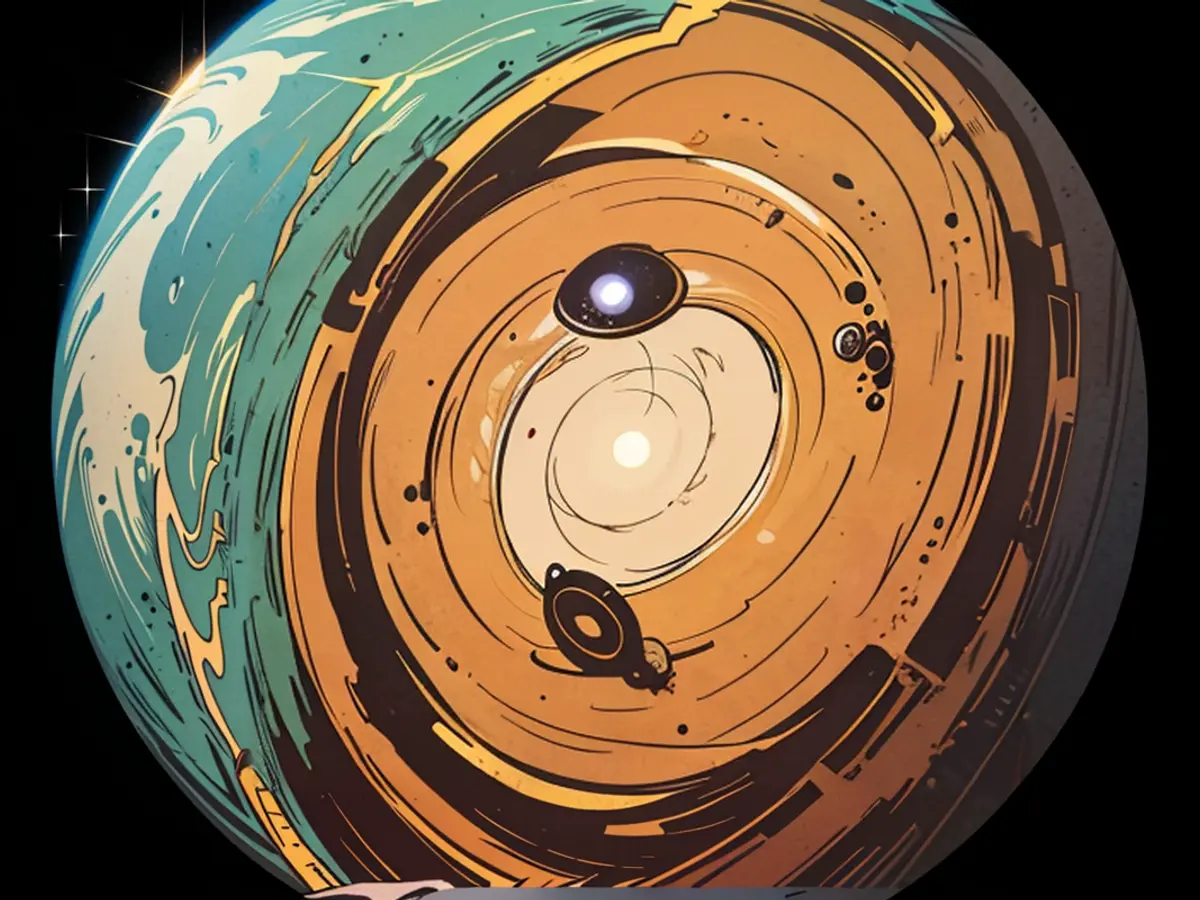Experiment in Texas - Four people, 378 days on Mars - Nasa simulation ends
Four people, 160 Square meters - and more than an entire year: After 378 days in a Mars Simulation Habitat of the US Space Agency NASA in Houston, Texas, two women and two men will return to their daily life on Earth this Saturday (July 6). For twelve months, the four volunteers have not left the "Mars Dune Alpha" habitat, which was created using a 3D printer and has no windows. They celebrated birthdays there, put up a plastic Christmas tree and hung Christmas stockings - in front of a screen showing a fireplace.
NASA's goal is to bring people to Mars and back
All of this in the name of science: The so-called "Chapea" program (Crew Health and Performance Exploration Analog) is designed to help NASA bring people back to the Moon - and eventually further away - in the future. "The knowledge we gather here will enable us to eventually bring people to Mars and safely back home," said NASA Manager Grace Douglas during the four inhabitants' arrival in June 2023.
As early as the 2030s, it could be that far according to current planning. With the "Artemis" program, NASA plans to bring people back to the Moon for the first time since more than half a century - including the first non-white person and the first woman. The long-term goal of "Artemis" is the establishment of a permanent Moon base as a foundation for manned missions to Mars.
Four volunteers in the service of science
The four participants of the first "Chapea" mission are not trained NASA astronauts. Anyone between the ages of 30 and 55 who is healthy and motivated, does not smoke, and has American citizenship or a permanent residence permit, a scientific university degree, and at least 1000 hours of flying experience could apply.
Selected were Ross Brockwell, who organized public works in the US state of Virginia, biologist Kelly Haston from San Francisco, doctor and three-time father Nathan Jones from the US state of Illinois, and microbiologist Anca Selariu. "I can't believe I'm here," said Selariu before entering - and Jones thanked his family for their support: "To my wife and my children: I love you to Mars and back."
Communication in "Mars time"
The four lived on 160 Square meters for a year - with approximately two by three meter sleeping quarters, a living room with a TV and chairs, workstations with computers and a medical station. They were allowed to communicate with their families and friends - but only in "Mars time," meaning that even sending a short SMS usually took 22 minutes.
In a small outdoor area, the four inhabitants simulated Mars soil experiments. In addition, maintenance of the facility and sports were among their tasks, for example on home trainers. "To make it as Mars-realistic as possible, the crew is also confronted with environmental stress factors - for example, limited resources, isolation, and malfunctioning equipment," said NASA.
"The main reason we funded this is that we need better answers to the question: How much food do you really need for a Mars mission?", said NASA Manager Rachel McCauley to the "New York Times". "And what about the psychological aspect of the mission? The monotony? The loneliness?"
Vegetable garden in the inner courtyard
To make the limited menu for the astronauts more appealing, the crew built tomatoes, peppers, and lettuce in an inner garden. "Farming can also have a psychological benefit for astronauts living in an isolated environment far from Earth," said NASA manager Gioia Massa. We also hope to gather data from this.
"Chapea" is not the first experiment of its kind. NASA has already gathered experiences and data from a simulation facility in Hawaii with the "Hi Seas" missions. The same is true for the space agencies of Europe, Russia, and China, who conducted the "Mars 500" project nearly 15 years ago. And it will continue: NASA has two more "Chapea" missions in planning, the next one is scheduled to start in early spring 2025.
- The two women and two men participating in the Mars simulation are representatives of diverse backgrounds, including a biologist from San Francisco and a microbiologist.
- The USA, through NASA, aims to send people to Mars in the future, starting with returning to the Moon.
- NASA's "Artemis" program aims to establish a permanent Moon base as a stepping stone for human missions to Mars.
- Despite living in a 3D-printed habitat with no windows, the volunteers celebrated traditional holidays like Christmas with a bit of creativity.
- Communication with family and friends was possible, but it was delayed due to the time difference known as "Mars time."
- Vegetables such as tomatoes, peppers, and lettuce were grown in an inner garden to enhance the astronauts' diet and improve their psychological well-being.
- The data gathered from these Mars simulation experiments will help address challenges related to food supply, psychological aspects, and resource management in future space travel, including missions to Mars.







